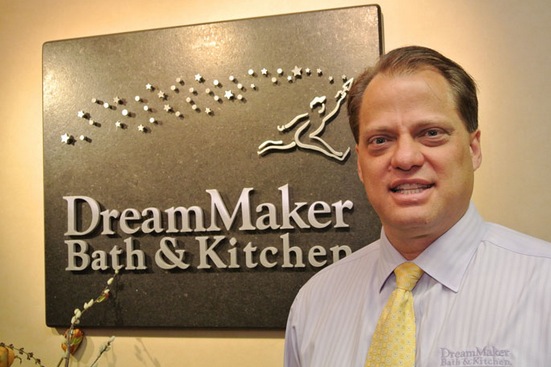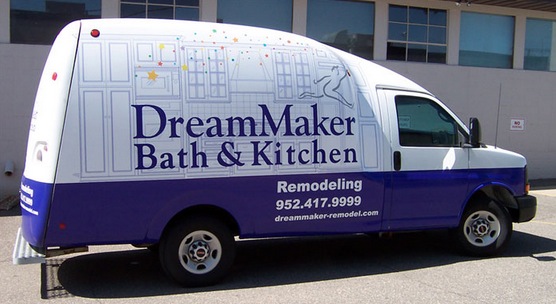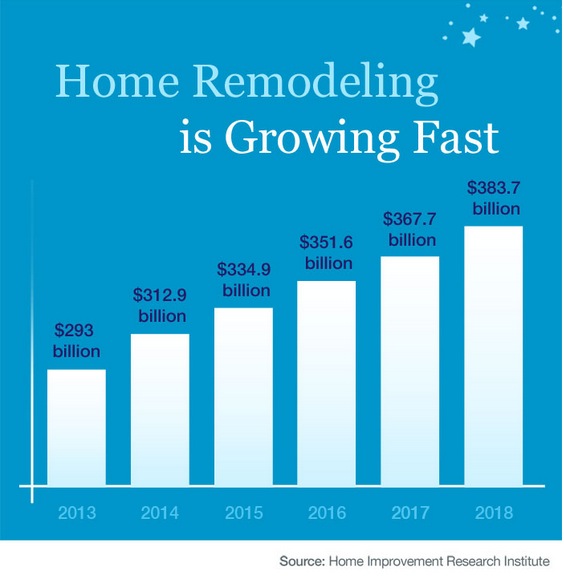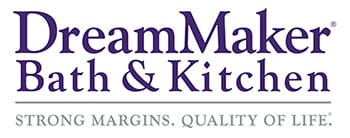The DreamMaker remodeling franchise has released its 2014 FDD. President Doug Dwyer discusses the biggest changes and how they will help franchisees.

DreamMaker Bath & Kitchen President Doug Dwyer is excited. His franchisees finished 2013 with same-store sales that were up 23.8% for the year — a growth rate that was seven times higher than the remodeling industry as a whole. And demand for remodeling is still growing strong. In fact, demographic changes, combined with the aging of America’s housing stock, mean that demand for remodelers should remain strong for a long time.
The remodeling franchise has plans to expand into new markets in 2014 and recently updated its 2014 Franchise Disclosure Document, which explains the franchise in tremendous detail for franchise candidates. We give a copy of the FDD to franchise candidates during our mutual evaluation process — a series of conversations we have with people who want to learn more about DreamMaker, and in which we’ll want to learn about you, too. To get a copy, start the conversation by filling out a form, which will give you access to our free franchise report.
We recently asked Doug to explain the biggest changes in this year’s FDD and why they are important for franchisees:
What are some of the big changes in this year’s FDD?
One big change is that we have started doing an Initial Advertising and Promotional Deposit with new franchisees. It doesn’t affect startup costs for the business at all, but it does help make sure that franchisees get off to a stronger start and avoid costly missteps. What happens — and this is true throughout franchising — is that when a new franchisee gets started, the franchisor will have them set aside some money to pay for marketing in the first three to six months after they launch. Often, though, a franchisee will be tempted to dip into those funds to pay for capital improvements, like a new computer, copy machine, design software or to establish a retail location that wasn’t budgeted with their start up plan. Unfortunately, pulling those dollars away from marketing can be extremely detrimental to the success of their business. To keep that from happening, we now require our franchisees to make a $36,000 deposit into an account set aside for their local marketing. DreamMaker invests $12,000 of it into SEO, pay-per-click ads and PR for the franchisee, as well as an advertising campaign in newspapers or magazines in their market. By aiding franchisees with those initial steps to build publicity and attract customers, we allow our franchisees to focus on learning their business, networking and selling. The other $24,000 will be held in deposit to reimburse them for approved marketing activities like home shows, online marketing or print advertising campaigns. When they hand in an invoice, we’ll release the money to cover that expense. What this setup will do is ensure that the marketing gets done during the startup phase of the business and that the marketing is happening in the best places and spaces.
It’s important to spend the money to market your business, but it’s also important to spend it wisely. With marketing, not everything is going to work. We know from our experience what is most likely to work, and we know what won’t. This change creates a system to help franchisees be more successful more quickly while avoiding mistakes that could stifle growth. We also help franchisees understand the importance of doing a mix of proactive and reactive marketing tactics as strategic approach in our GPS Marketing System.
What is the difference between proactive marketing and reactive marketing?

A good example of reactive marketing, historically, would have been a Yellow Pages ad. You place the ad, then you wait for the phone to ring. Another example, which is something we still do, is having your van wrapped so that it becomes an advertisement (a mobile billboard) for your business. Once it’s done, you count on people noticing it and giving you a call. A modern example of reactive marketing would be creating a website. The site may have great content, but unless you update it and take actions to drive traffic to it, it’s reactive marketing. Proactive marketing is when you are working to drive engagement. When you launch a blog on your website that keeps customers updated on the latest remodeling trends, or when you start a PPC ad campaign to reach more customers online, that’s proactive marketing.
Here’s why it’s important to do both — and why you should be using multiple marketing approaches: Marketing is cumulative. There are a handful of customers who will give you a call after they encounter your brand for the first time, but most customers will need to see you 2-3 times across different media before the brand starts to have an impact. Maybe they see you online, see your van around town and see you in a newspaper advertisement. Maybe they see you at a trade show, then see your yard sign in front of a customer’s home. Each of those exposures to your brand increases the chance that they will give you a call. You want to take advantage of multiple marketing methods to maximize the number of times you expose a customer to your brand.

Whatever you’re doing seems to be working. Tell us about the nearly 24% increase in same-store sales last year.
Part of the increase in same-store sales is obviously the economic recovery. The other part of the equation is our system approach and pro-active planning – this helps create infrastructure to be prepared for growth — franchisees hiring, investing and thus being in a position to take advantage of increased interest in remodeling. Depending on the size of your operation, you may need to add on a lead carpenter. It may be that you are breaking through an important threshold in your business and you no longer need to be the production manager — instead, you need to hire someone to do this for you and have them manage your lead carpenters. That is a big set of reins you are handing over, and that is something you want to do with wisdom and care. There’s a thing called the Sigmoid Curve that illustrates the way businesses tend to operate. Generally, there is a phase when you are getting all the pieces in place for growth, and at that point performance is relatively flat, but once all the pieces are there, you enter the “life is good” phase, when you’re maximizing your growth potential. Eventually you max out, and need to reinvest again to realize more growth, so you go through another transitional phase. We help our franchisees understand the different phases and what they need to do to grow. If they need to hire, we help them define the role of the person they need to bring on with job descriptions and profiles that help them hire the right people. We also help coach them through the mental and sometimes emotional hurdles that can make it hard for an owner to hand over some of the reins to great employees.
What were you doing during the recession that prepared your franchisees for the burst of growth you saw in 2013?
We doubled or tripled our efforts on sales training. We really sharpened our saw when it comes to helping franchisees become better at sales, and our people are now far more skilled. Those skills helped them benefit a lot during the recovery. Also, because we have such strong systems for sales and production — including a linear and visual process flow that makes mastery of these systems easier to attain for our franchisees — we have happy customers who give us very strong referrals and a lot of repeat business.
 DreamMaker has mapped out a visual workflow that helps remodelers track each phase of a project.
DreamMaker has mapped out a visual workflow that helps remodelers track each phase of a project.
What does the future look like for DreamMaker?
I recently talked to a franchisee in Utah that is looking for a third full-time salesperson for the first time since they’ve been with us. They are so busy they can’t keep up. Another franchisee in Michigan has added their fifth salesperson. We are seeing growth we’ve not seen before, ever. In many markets, our franchisees are performing better now than they have ever performed in the past. The opportunity is the best it has been for years. When you look at the pent-up demand for remodeling and the number of homes that are hitting their peak remodeling years — it’s just unprecedented. It’s just creating more and more need. And with the economy getting better, you have more people moving out of mom and dad’s house and buying homes that they will want to remodel. There are also some people who have recovered some value in their home, but not enough equity to make a move worthwhile, and they are deciding to invest in their home instead. There are a lot of dynamics that make it a great time to open a remodeling franchise.
Learn about the DreamMaker franchise opportunity
To learn more about the DreamMaker remodeling franchise and read interviews with DreamMaker franchisees, visit our blog. To learn even more, fill out a form to download our free franchise report and start a conversation. We look forward to hearing from you!




